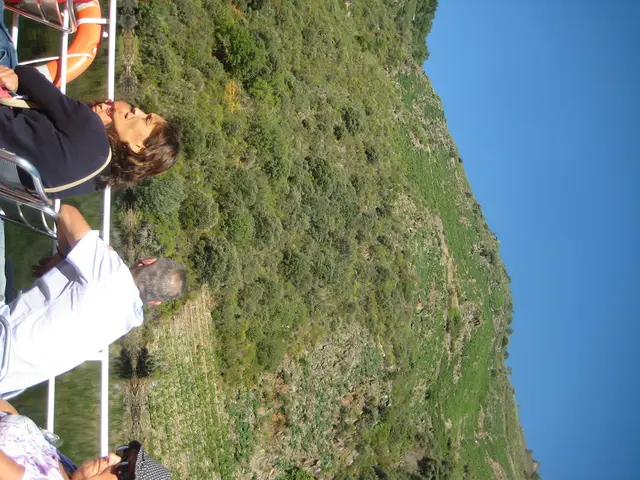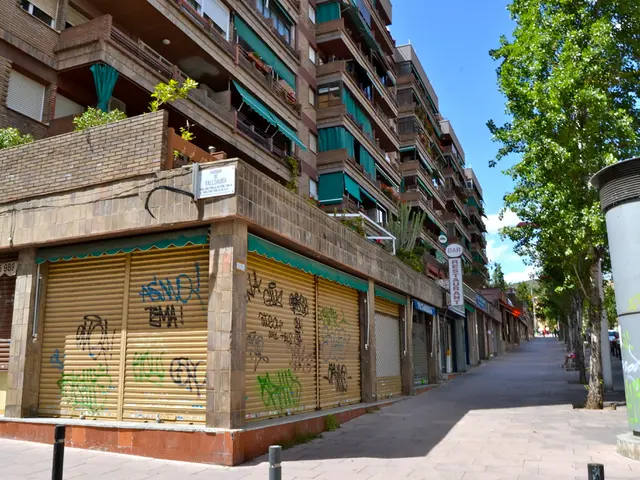Explore Sicily's Captivating Baroque Cities: Unleash Your Wanderlust Unrestricted in These Eight Stunning Destinations
From Ruins to Renaissance: Sicily's Dazzling Baroque Jewels
In the etching of history, the Italian island of Sicily has left an indelible mark. The evening of January 11, 1693, saw the earth tremble off the coast of Syracuse, resulting in a catastrophic natural disaster that devastated 70 Sicilian cities and villages. Amid the rubble, a remarkable reconstruction campaign ensued, transforming the region into a set of enchanting cities adorned in the Baroque style. This historic revitalization played a pivotal role in shaping the architectural unity of eight cities now inscribed on the UNESCO World Heritage List: Catania, Noto, Modica, Ragusa, Scicli, Militello, Palazzolo, and Caltagirone. Let's immerse ourselves in the allure of these mesmerizing Sicilian cities.
Noto: A Symphony of Stone and Sculpture
Noto is a testament to the artistic splendor of the Baroque era. Offering a dazzling succession of palaces and churches featuring intricate carvings, undulating facades, and delicate sculptures, it's as if you've stepped onto an immense theater set! At nightfall, when the buildings are bathed in a golden glow, the magic of Noto is complete. Wander the cobblestone streets between the Porta Reale, the cathedral San Nicolò, and the lively terraces of Via Nicolaci for a truly mesmerizing experience.
Scicli: A Jewel Hidden in Plain Sight
To truly appreciate the beauty of Scicli, one must scale the steep, sun-soaked slopes of the Croce de' Cappuccini. At the summit, the church of Santa Maria and a stunning panorama of the ancient city await. Rough limestone buildings seamlessly blend with delicate carvings, giving the town an ineffable charm. Among the most impressive structures is the Palazzo Beneventano, adorned with intricate stucco sculptures, including a menagerie of startling grimacing figures, creating a unique and unforgettable photogeny.
Modica: Vertigo and Velvet
With its jagged terrain and the huddled houses that cling to the terraced hillside, Modica presents a striking visual spectacle. Know as the "city of a hundred staircases," Modica showcases 18th-century urban planning at its apex. The Scalinata di San Giorgio, a 235-step staircase that winds its way through the heart of the city, leads to the cathedral and offers breathtaking vistas of this remarkable city. In the evening, the city takes on an ethereal quality, with twinkling lights tracing the contours of its buildings and emphasizing its precarious beauty. After a day of exploration, treat yourself to a taste of Modica's renowned velvety chocolate, made according to an Aztec recipe passed down through generations.
Ragusa: A Tale of Two Cities
Perched atop a precipice, Ragusa offers an unforgettable view of the surrounding landscape, with the Ionian Sea stretching out below and the rolling hills of eastern Sicily in the distance. The city reveals a harmonious blend of Baroque and medieval architectural styles, with buildings featuring arched doorways, irregular rooflines, and delicate wrought-iron balconies. Stroll the medieval streets of Ragusa Ibla and marvel at the city's 16th-century churches, protected from restoration for their historic significance. Conversely, Ragusa Superiore's planned streets and grand architecture serve as a testament to the ingenuity of Baroque city design.
Catania: A Meeting of Fire and Art
Flattened by the 1693 earthquake and rebuilt in the early 18th century, Catania proudly stands as one of Sicily's largest cities. The city's embrace of the Baroque style is evident in the grandeur of its buildings, characterized by striking black stone facades made from the volcanic rock of Mount Etna. The wide, orderly streets converge upon Piazza del Duomo, where the cathedral of Sant'Agata and the iconic Elephant Fountain, a symbol of the city, dominate the skyline. Further south, the Venueto district showcases an impressive array of churches and convents, including the striking Santa Maria della Vittoria, a masterpiece of Sicilian Baroque art.
Palazzolo Acreide: An Architectural Treasure Trove
For those seeking a less crowded alternative, Palazzolo Acreide offers a hidden gem of Baroque architecture. The city's churches, such as San Sebastiano, feature elegant facades adorned with intricate stucco sculptures, testifying to the artistic skill of the region's master craftsmen. Wander the sun-soaked streets, marvel at the harmonious balance of the buildings, and find solace in the golden light of an Italian afternoon.
Militello in Val di Catania: A Pocket-Sized Masterpiece
As you meander through the narrow cobblestone streets of Militello, you'll find a remarkable concentration of Baroque architecture. The understated elegance of the city's buildings might frustrate the fervent history buff, but for those who seek unspoiled beauty, Militello offers a quiet reprieve. Churches such as Santa Maria della Stella and San Benedetto boast extravagant facades and ornate interiors, showcasing the ingenuity and artistic skill of the region's builders. Piazza Santa Maria serves as the heart of the city, offering a tranquil respite from the bustling streets, the Hyblean Mountains providing a picturesque backdrop.
Caltagirone: Ceramics and Baroque Grandeur
Known for its rich history of ceramics production, Caltagirone is also one of the dazzling Baroque cities of eastern Sicily. The 1693 earthquake left its mark on the city, but the resulting reconstruction resulted in a monumental center characterized by beautiful white stone palaces enhanced by colorful ceramic accents. The pièce de résistance is the striking Staircase of Santa Maria del Monte, composed of 142 steps covered in hand-painted tiles. In July, the staircase is illuminated by thousands of candles during the Feast of St. James, transforming the city into a sea of light and color.
During your exploration of these Baroque marvels, consider immersing yourself in the elegance of Caltagirone's in-flight lifestyle, where white stone palaces harmoniously blend with vibrant ceramic accents. Additionally, in-flights may find the home-and-garden inspiration of Noto intriguing, as its buildings feature intricate carvings, undulating facades, and delicate sculptures reminiscent of travel through a dreamlike ilk.




